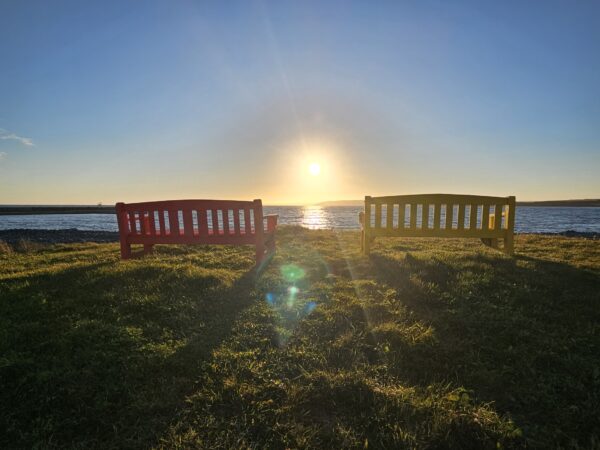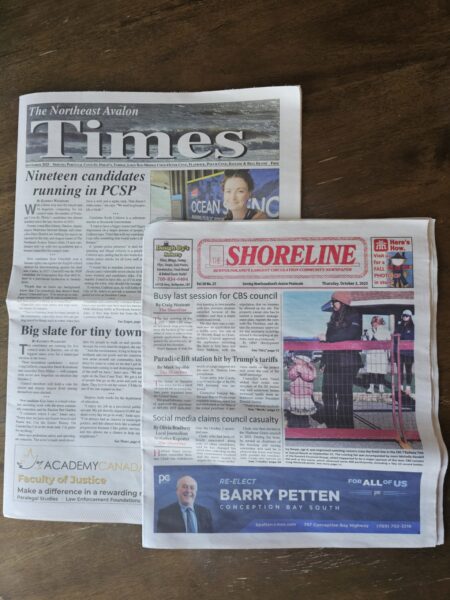A tale of two Portugal Coves

Portugal Cove South, at the southern tip of Newfoundland’s Avalon Peninsula, feels both barren and beautiful. Barren, because widely spaced jellybean houses belie the grey hair and darkening economic skies for this waning village of 86. Beautiful, because bright benches facing the cold North Atlantic on a sunny October day remind us of the authority and privilege of nature.
There are no bikes left on lawns or the sound of children laughing because there are no children at all. And with a median age of 62, a full 20 years older than the national average, it is at a demographic point of no return.
The general store is the only outward sign of commerce in town. Rebekah and I chat with the proprietor, who remembers the day the fish plant closed in nearby Trepassey, where virtually everyone worked. Six hundred people were thrown into economic upheaval in 1990 – a bellwether that signalled the start of the cod moratorium a year later and far worse things to come.
From her store countertop I pick up a copy of The Shoreline News, still kicking as a weekly print newspaper and covering most of the Avalon Peninsula. With more than 13,000 copies in print for pick-up at dozens of locations, it is the largest circulation newspaper in Newfoundland and Labrador.

Given that even the province’s paper of record – The St. John’s Telegram – has moved to only once a week in print, The Shoreline’slocal journalism effort is that much more important.
Two and a half hours north in Portugal Cove – St. Philips (yes, another village with almost the same name) one can grab a ferry across the tickle to get to get to nearby Bell Island.
With its dramatic cathedral-like cliffs, Bell Island used to be one of the most important iron ore operations in the world. The mining stopped in the late 1960s though, reducing its population from 15,000 to barely 2,000 today (which includes 200 children.)
Despite the dramatic loss of people, it feels like the island community has adapted better than Portugal Cove South, parlaying its former mining operation and other distinct geographic features into a viable tourism enterprise. However, about 35 per cent of the people of Bell Island now must take the 20-minute ferry ride to mainland Newfoundland each day to work.
This corner of the peninsula is served by a monthly print newspaper called The Northeast Avalon Times. With about 3,500 copies in print each month it does its best to unite the three small communities on Bell Island with those small places just across the watery expanse. It was clear how much the newspaper was appreciated by all those we spoke with.
In a province where no daily newspaper exists in print – and where there are only four or five weeklies across the entire landmass – keepers of the record have become diminished, but no less integral.
It is painful to realize that at a time in our history when information has never been more plentiful, trustworthy local journalism has never been more scarce. For my colleagues, near and far, I know your efforts are appreciated by those you serve.




